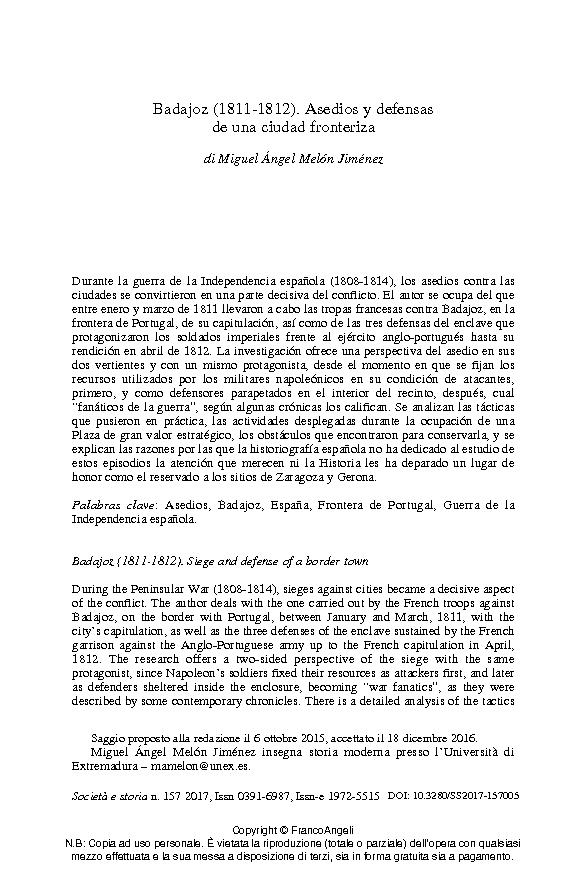Badajoz (1811-1812) : asedios y defensas de una ciudad fronteriza
505-532 p.
Durante la guerra de la Independencia española (1808-1814), los asedios contra las ciudades se convirtieron en una parte decisiva del conflicto. El autor se ocupa del que entre enero y marzo de 1811 llevaron a cabo las tropas francesas contra Badajoz, en la frontera de Portugal, de su capitulación, así como de las tres defensas del enclave que protagonizaron los soldados imperiales frente al ejército anglo-portugués hasta su rendición en abril de 1812. La investigación ofrece una perspectiva del asedio en sus dos vertientes y con un mismo protagonista, desde el momento en que se fijan los recursos utilizados por los militares napoleónicos en su condición de atacantes, primero, y como defensores parapetados en el interior del recinto, después, cual "fanáticos de la guerra", según algunas crónicas los califican. Se analizan las tácticas que pusieron en práctica, las actividades desplegadas durante la ocupación de una Plaza de gran valor estratégico, los obstáculos que encontraron para conservarla, y se explican
las razones por las que la historiografía española no ha dedicado al estudio de estos episodios la atención que merecen ni la Historia les ha deparado un lugar de honor como el reservado a los sitios de Zaragoza y Gerona. [Testo dell'editore].
During the Peninsular War (1808-1814), sieges against cities became a decisive aspect of the conflict. The author deals with the one carried out by the French troops against Badajoz, on the border with Portugal, between January and March, 1811, with the city's capitulation, as well as the three defenses of the enclave sustained by the French garrison against the Anglo-Portuguese army up to the French capitulation in April, 1812. The research offers a two-sided perspective of the siege with the same protagonist, since Napoleon's soldiers fixed their resources as attackers first, and later as defenders sheltered inside the enclosure, becoming "war fanatics", as they were described by some contemporary chronicles. There is a detailed analysis of the tactics put into practice, the activities developed during the occupation of a Position of high strategic value and the obstacles found in order to preserve it. There is also an explanation of the reasons why Spanish historiography has not paid to these episodes the
attention they deserve, and why History has not granted them the place of honor given to other sieges such as that of Saragossa or Gerona. [Publishers' text].
Fait partie de
Società e storia : 157, 3, 2017-
Articles du même numéro (disponibles individuellement)
-
Informations
Code DOI : 10.3280/SS2017-157005
ISSN: 1972-5515



